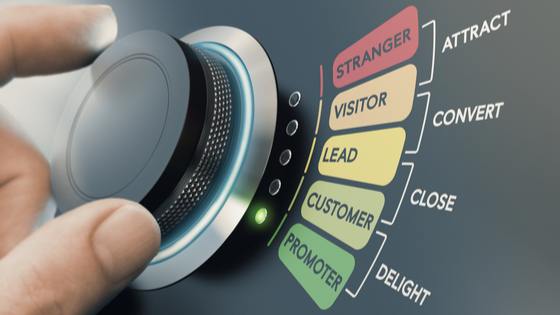In Part 1 of How to Make Money in Affiliate Marketing, we focused on how to choose the right affiliate marketing company.
Today’s post is about YOU, your part in creating a rip-roaring Affiliate Marketing empire. You’ve chosen the company (or companies) you want to align yourself with and now it’s time to start promoting their products and services.
How to Promote Affiliate Products

Image Credit: Free on Canva Pro
There are two distinctly different paths to follow when it comes to promoting affiliate products. You can use:
- Paid Methods (Advertising)
- Unpaid Methods (Organic Methods)
I’ll focus on unpaid methods in this post because, if you’re new to Affiliate Marketing, you probably don’t have much cash flow yet. I’ll touch very briefly on paid methods though, just so you know what your options are.
Paid Methods
Here are the most common paid methods to market affiliate products.
- Pay Per Click Advertising (PPC) e.g. Google Ads and Bing Ads
- Social Media Advertising e.g. Facebook, Twitter, LinkedIn, Pinterest
- Video Advertising e.g. YouTube Ads
Advertising online is based on volume. You have to put out a lot of Ads to get a return on your investment, which is why I recommend you start with organic methods.
Unpaid Methods
Very simply, these are free ways to draw traffic to your affiliate offers. Well, no marketing methods are entirely free, there is a cost involved. The cost is your time.
Because driving organic traffic to your affiliate offers usually requires you to create a lot of content — and targeted content at that.
This is how you build a career as an Affiliate Marketer. This is your journey, this is what you’ll be doing most days as an affiliate marketer, while you are building trust with your market and authority online.
We can also call this Trust Marketing or Relationship Marketing.

Content Marketing
There are many different ways you can create content online. Here are the seven most common ones.
7 Types of Content to Promote Your Affiliate Offers
- Blog Posts
- Social Media Posts
- Videos
- Podcasts
- Sales Funnels
- Emails
- Digital Products (eBooks and Courses)
The Purpose of Content Marketing
The purpose of all Content Marketing is to
- Educate
- Engage
- Inform
- Inspire
- Entertain
Bear these 5 aims in mind as you consider each piece of content you put out.
GOLDEN TIP:
If all you’re doing is promoting your affiliate products, you’re basically spamming your audience. Aim to give value to your audience in each and every piece of content you post online. That’s how you build a tribe, a loyal following and ultimately how you will build a client base.

1. Blogging
The most common way to promote affiliate products is by setting up a blog or niche website. Bloggers create posts that highlight and address challenges or solve problems their visitors might be experiencing.
They also create reviews of products they feel will further benefit their audience.
It’s worth learning the fundamentals of Keyword Research and Search Engine Optimisation (SEO) if you want to drive organic (free) traffic to your posts.
However, keep in mind that it takes time to generate organic traffic and build authority. Be prepared for the slow build.
GOLDEN TIP
Did you know that you could be a blogger without owning your own domain or creating your own website?
Simply write your posts and publish them here on Medium (as Stories) or on LinkedIn Publisher (as Articles). There’s a massive benefit to doing it this way.
Publishing platforms already have Authority and traffic. You’re more likely to get visitors reading and commenting on your posts than when you’ve just started your own blog.
Your posts also rank faster in the search engines. A whole bunch of benefits, really. Just saying. 🙂
Related: How to Start a Blog (FREE)
2. Social Media
Social Media can go hand-in-hand with blogging or stand-alone. Here’s what I mean by this. Blogging and Social Media As a blogger, you can build social media profiles linked to your blog.
Each time you create a blog post, you also share your post on your chosen social media platforms. You can also create Groups on Facebook Groups or LinkedIn to build a tribe, a free version of a membership site.
But be warned, Facebook has been known to shut down groups with no notice. Social Media Influencer You can also utilise the power of social media even if you have no blog or website of your own by becoming an Instagrammer or a YouTuber.
Infographics If your top skill is graphic design, design infographics or illustrations to share on social media. Unique social media posts with images that really pop can drive huge traffic to your offers.
3. Videos
If writing is absolutely not your thing and you come across much better on camera, go video. Video marketing is hooooge right now and it’s here to stay.
Again, you can use video as a blogger by embedding your own videos in your posts, or you can skip the blogging bit and just become a YouTuber. You can also use video as a Social Media Marketer.
Live Video is one of the biggest trends, with Facebook Lives and Instagram Live leading the way. Did you know that you can also go live on YouTube? And even LinkedIn is starting to introduce Live Video now.
4. Podcasts
Not quite ready to go video yet? Why not try the audio version, Podcasts? Oh, and it’s really easy to create a podcast from a video — simply record the audio version and upload.
And if you are brave enough to go video you might as well set up a podcast while you’re at it. This way you can reach a wider audience with each piece of content you create.
GOLDEN TIP
While we’re on this subject, why not put some extra effort in and do this…?
For each topic you cover, create 5 types of content
- A blog post on your own website (if you have one)
- Repurpose your content and create a post on a publishing platform (e.g. LinkedIn or Medium)
- Create corresponding social media posts and/or infographics
- Create a presentation on Canva or Powerpoint and upload it to Slideshare
- Shoot a video and upload it to YouTube
This technique can have a huge impact because you can link to each platform from each platform, giving your audience new ways to find you.

Pic of Sales Funnel Image Credit: Free on Canva Pro
5. Sales Funnels
Here’s another technique that can stand alone or work well with a website. Serious affiliate marketers build sales funnels to drive traffic to their affiliate offers.
Not sure what a sales funnel is? Totally understandable if you’re brand new to affiliate marketing.
It took me nearly 4 years to find out. Wish I’d got this information sooner because it’s a critical piece in your success as an Affiliate Marketer.
Essentially, a sales funnel is a nifty way to guide your prospects through the sales process — to turn your prospects into buyers. Most sales funnels start with an email capture form so that you can start building a relationship with your prospects or customers by email. And send them your freebie.
6. Emails
This brings us to email marketing. I never quite understood the value of email marketing until I realised that my website traffic had kind of come to a standstill.
With each post I published, I’d get new visitors but I wasn’t retaining my old visitors. Email marketing is a way to keep your website top of mind.
With a gazillion websites putting out great content every day, you need a way to entice your visitors to keep to yours. If you’re not reminding them, who will?
7. Digital Products
Once you have a body of posts you’ve created on one topic, you’re ready to start creating your own digital products. Digital products fall into one of two main categories.
- eBooks — free or on Amazon Kindle
- Courses — these can include Video Courses, Email Courses, Webinars, Virtual Summits or Masterminds
Consider which of these methods suit your personality and which work best for your audience.
In each product you put out online, you can pop a link to your sales funnel and drive prospects to your affiliate products.
And, at this stage of the game, you might even consider creating your own affiliate program to market your products.
Here’s where the Affiliate Marketer becomes the Digital Entrepreneur.
Are you excited? Wishing you all the best as you build your rip-roaring online empire. You’ve got this!
* If you purchase anything through a link in this article, you should assume that I have an affiliate relationship with the company providing the product or service that you purchase, and that I’ll be compensated in some small way at no extra cost to you.
Next Up, What’s an Email List For?

